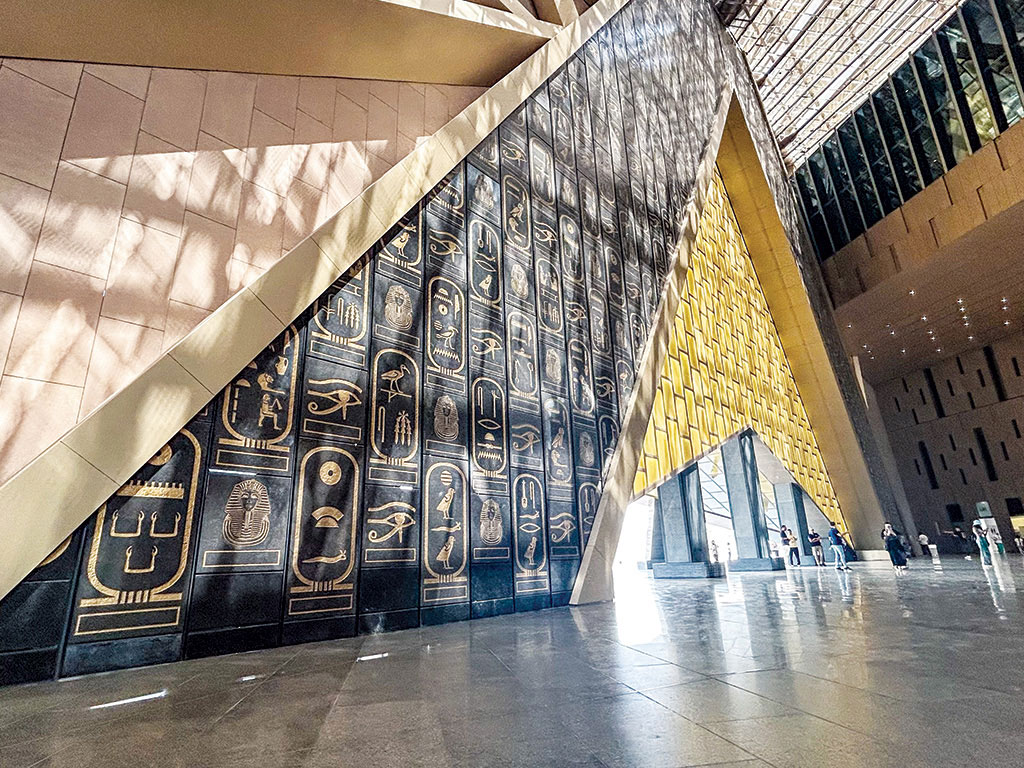Introduction to Enhanced Tourism in Egypt
Egypt is experiencing a resurgence in its tourism sector, relying heavily on significant new developments aimed at captivating both domestic and international visitors. This growth is prominently driven by the upcoming opening of the Grand Egyptian Museum and a flurry of hotel investments designed to cater to increased tourist traffic. In the dynamic landscape of tourism, these advancements may markedly affect how travelers plan their transfers and other services, creating more favorable options through platforms like LocalsRide.com.
The Impact of the Grand Egyptian Museum
The Grand Egyptian Museum (GEM) is poised to be a game-changer for Egypt’s tourism experience. Located just two kilometers north of the iconic Giza Pyramids, this museum is set to be the world’s largest archaeological museum dedicated to a single civilization, promoting Egypt’s rich historical narrative to a global audience. With its vast complex spanning an impressive 500,000 square meters, the museum has already generated considerable interest among tourists anticipating its unveiling in July 2025.
El Kady, the CEO of the Egyptian Tourism Authority, noted that the museum is expected to significantly enhance Cairo’s appeal as a tourist destination. Traditionally, visitors have viewed Cairo merely as a stopover, often staying only one or two nights to see the pyramids. The GEM is likely to encourage longer stays and a deeper exploration of the city and its surrounding areas, presenting an opportunity for local transportation services, including taxis and transfers, to cater to an evolving tourist demographic.
Visitor Growth Projections
Looking ahead, El Kady is optimistic about a projected growth rate in visitor arrivals of 10 to 12 percent in the coming year, potentially elevating annual tourist numbers to 17 million. This anticipated influx represents not just an economic boon but also a chance to reshape the logistical dynamics of travel within Egypt—meaning more demand for reliable transport options to and from varying attractions.
Investment in Luxurious Accommodations
In tandem with the museum’s opening, Egypt is seeing substantial investment in its hotel network, essential for supporting this surge in tourist numbers. Currently hosting 109 projects in development—more than any African country—Egypt aims to add approximately 250,000 new hotel rooms by 2028. Among the most notable projects is a luxurious mixed-use resort city being developed in Ras El-Hekma, projected to revolutionize the coastal vacation experience.
These investments reflect a partnership with prominent hospitality brands. Over 71 percent of these new rooms will be established by major global hotel chains such as Accor, Hilton, IHG, Marriott International, and Radisson Hotel Group, ensuring that travelers have access to a broad spectrum of services and accommodations. As visitors increase, efficient transfer services will become even more critical to enhance guest satisfaction and facilitate smooth travel experiences across Egypt’s tourist trail.
Infrastructure Development and Challenges
While the tourism potential remains expansive, El Kady acknowledges that infrastructure needs continuous improvement to match the growing demand. Enhancements to road networks and the expansion of Cairo’s Metro system—with plans for a fourth line—aim to improve connections across the country. Addressing accessibility will be vital, as it directly influences the visitor experience, impacting how easily tourists can access significant cultural sites and modern amenities.
Future Regulation of Accommodations
In anticipation of thriving tourism, new regulations for short-term rentals are being introduced to ensure safety and hygiene standards. The Egyptian government seeks to standardize accommodations, offering tourists a clear understanding of what constitutes an approved rental property. This proactive measure will build confidence among travelers and enhance the overall experience while visiting the area.
结论
Egypt’s tourism sector is on the cusp of a remarkable transformation, largely fueled by the launch of the Grand Egyptian Museum and expansive hotel developments. These innovations are likely to draw millions of visitors, which in turn will increase demand for transportation options, shaping the workflows of travel service providers. At the same time, platforms like LocalsRide.com are uniquely positioned to meet these evolving needs. Offering insights into available vehicle options, users can easily secure trustworthy transfers tailored to their specific requirements. As the landscape of tourism evolves, booking with LocalsRide ensures a smarter, safer, and more insightful travel experience. Book your ride through LocalsRide.com for unparalleled convenience and value.
Ultimately, this burgeoning tourist framework—coupled with expanding services—ushers in an era ripe with opportunity for both visitors and local service providers. The intersection of tourism growth and effective transport services underscores the importance of seamless logistics in elevating travel experiences in Egypt.

